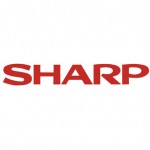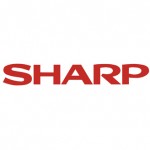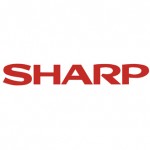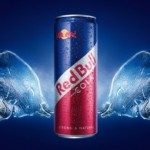
Standing for strengths, weaknesses, opportunities and threats, SWOT analysis represents a strategic analytical tool to be used for company analysis. Burrow (2008) stresses that SWOT analysis offers the advantages of identifying core capabilities and competencies associated with the business and developing suitable strategies and tactics. Strengths Oracle research and development capabilities can be highlighted as one of its main points of competitive edge. Specifically, the company successfully operates Oracle Labs where a wide range of projects that include Fortress, Maxine Research VM, QVM, Adaptive Optimization, Computer Architecture and Performance Modelling (CAP), Network Computing, Scalable Synchronisation, Electric VLSI Design System and many other projects have been developed that contribute to the competitive edge of the company (Oracle Lab, 2011, online). Other points of strengths include inorganic growth strategy that has enabled the company to achieve its current status and the robust market positioning of the brand. Moreover, the company has a strong and charismatic leader in the personality of Larry Ellison. Moreover, the takeover of Sun Microsystems by Oracle considerable enhanced the position of the company in the global marketplace and the same time as increasing the ranges of products and services offered by Oracle. Weaknesses One of the major weaknesses of Oracle relates to the heavy dependence of the company on the US and Europe marketplaces. Specifically, during the fiscal year of 2009-2010 Oracle operating revenue from US and European markets amounted to 64% of the total business revenues (Annual Report, 2009 – 2010). In other words, the lack of Oracle presence in Asian marketplace can be considered as the weakness of the company due to the fact that the role of Asian businesses are growing in the international business arena, at the same time when US and European countries are faced with serious financial issues. Moreover,…

PESTEL is one of the most effective strategic analytical tools available that can be used for analysing the external environment for the business (Klein, 2007). The abbreviation stands for political, economical, social, technological, environmental, as well as, legal factors that affect the business. The following table illustrates the PESTEL analysis conducted for Oracle Corporation in UK marketplace: Political Environmental regulations and protection Tax regulations International trade regulations The level of consumer protection The level of political stability Health and safety regulations Contract enforcement regulations Economical Taxation The level of economic growth Interest rates UK monetary policies Unemployment rate and relevant policies GBP:USD exchange rate The level of government and consumer spending Social Social values The nature of income distribution Demographic tendencies Social mobility of labour Work-career balance The level of consumer education Personalities of opinion leaders Technological Technological breakthroughs in related to the software industry Research and development The level of energy use and associated costs Innovations in information technology The duration of technology life-cycle Environmental The activities of non-government environmental groups Global warming issues The impact of Oracle on environment and its consequences Legal Rules and regulations specific to the software industry Other government regulations affecting Oracle in direct and indirect ways References Klein, G. (2007) “Strategic Marketing” GRIN Verlag

Five forces strategy, introduced by Michael Porter (2004) describes five individual forces that shape the level of competition in any given industry. These forces consist of threat of new entrants, bargaining power of buyers, threat of substitute products or services, bargaining power of suppliers and the level of rivalry among existing firms within the industry. Threat of New Entrants Threat of new entrants relates to the level of difficulty associated with entering the industry. Accordingly, if there are substantial barriers to enter the industry the threat of new entrants would be low, and vice versa. The most significant industry entrance barriers are specified by Baker and Hart (2007) as brand loyalty, absolute cost advantage, economies of scale, switching cost and the level of government regulation. The threat of new entrants to the software industry in UK can be described as high. This is because the amount of financial resources required for entering the industry can raised by many businesses and individual entrepreneurs. Moreover, there is a constant risk for major software companies such as Oracle that any new business with innovative software offerings can claim Oracle’s market share within a short period of time. Bargaining Power of Buyers The essence of the bargaining power of buyers primarily relates to the level of easiness or difficulty with which buyers can change the companies. (Johnson et al, 2006). However, nowadays the buyers possess a vast amount of bargaining power almost in all industries due to the intensifying level of competition. The same applies to the UK software industry as well. Specifically, there are several other global players in UK software industry such as IBM, Microsoft and SAP, as well as, many other local companies that compete with Oracle in direct and indirect ways. Many of these companies offer the customers…

Sosik and Godshalk (2000) inform that transformational leadership theory has evolved once rapidly intensified level of competition in the global level has revealed serious shortcomings of transactional leadership style. Namely, changing market conditions have necessitated increased level of involvement of employees at all levels for decision making, a well as, the level of motivation of the workforce has become the matter of survival for many industries in the global marketplace. The main characteristics of transformational leaders are specified by Khanin (2007) as highly receptive of their followers’ needs and wants, as well as, striving for their professional development at various fronts that would result in followers eventually replacing leaders in the future. Moreover, Walumba and Hartnell (2011) justly attribute high achievement of transformational leaders to their attractive behaviour, charisma, and the ability to motivate their followers. Also, the role of organisational vision that is shared by all members of the workforce is stressed by Garcia-Morales et al (2008), who rightly specify the adoption of transformational leadership as an effective method of motivating workforce through developing and communicating the vision. The main distinction between transformational and transactional leadership styles can be specified as the ability of the former style to address higher, intangible needs of employees as well as material needs the latter style is mainly associated with. In other words, transformational leaders promote creativity, positive team spirit and challenging working environment, thus achieving increased level of performance through highly motivated workforce. However transformational leadership style can be time consuming process before they provide positive results, and they also create potential for abuse among certain members of the workforce. Specifically, the elements of sensitivity and gentleness expressed by transformational leaders might be perceived to be signs of weaknesses among specific members of the workforce due to their cultural differences, individual temperament…

The most important elements of SWOT analysis for M&S are presented on the following table: Strengths Financial maturity Human capital High level of customer loyalty Weaknesses Unfocused segmentation of clothing ranges Weak online presence High level of prices Opportunities Improving the offer of clothing ranges More focus on ‘ethical’ foods Focusing on customer segmentation Threats Conflicts between shareholders and executives Newly appointed top management not fitting in corporate culture Ineffective implementation of the proposed strategy

The Porter’s Five Forces model examines and analyses the competitive environment of Sharp Corporation. According to Porter (2004) there are five forces, which are discussed below in turn, that determine industry attractiveness and profitability in long-run. Threat of Entry of New Competitors Lynch (2006) states that in general threat of entry of new competitors in electronics industry is high as the new entrants can overcome entry barriers by investing in facilities, advanced technology or outsourcing the same electronic components from suppliers. However, Johnson and Scholes (2006) argue that the strong brand and large scale of economies the company built over the years with the use of advanced technologies resulted in high entry barriers such as large capital requirement, high switching costs, need for advanced technology, know-how knowledge and innovation, preventing new competitors entering into market. Threat of Substitute Products Although Sharp has strong brand equity associated with high quality and reliable products allowing the company to sell its products at premium, with increasing number of products being manufactured in China and Malaysia the company is struggling to reduce the impact of cheaper substitute products on most of its marketing segments (Datamonitor, 2010). Moreover, while certain products of Sharp such as TVs are considered to be the best in the market, many other products the company manufactures including PCs and mobile phones falls short from meeting high customer expectations indicating that it is high likely that there are direct alternative products available for these market segments. Bargaining power of Buyers Considering the nature of the electronics industry it is argued that the bargaining power of buyers is rather high. This is because electronic products are highly price sensitive as majority of them are considered to be luxury goods rather than essential and today’s consumers tend to demand high quality…

PESTEL analysis helps to analyse external macro-environmental factors and assesses their impact on organisation. The PESTLE analysis framework is made up of Political, Economical, Social, Technological, Legal and Environmental factors. Political Given the company’s international operations, political factors for Sharp can vary from country to country. In addition, these factors can change dramatically at any time as governments have the power to introduce any new regulations, impose tariffs or taxes. This shows that the company does not have any control over these factors or has a very little influence as they are usually exist at national level. However, almost all political factors that affect the Sharp have the same effect on its competitors. Hence, the company must be prepared for any possible changes that affect its trade in order to stay ahead of it competitors by incorporating existing political factors into its business strategy and constantly review the effects of these political factors. Economical Without doubt the macro-economic factors are one of the most important external factors for the company as they have profound effect on the company’s business. Moreover, considering the nature of products the company manufactures and sales, the economic indicators such as GDP growth rates, the level of disposable income and employment rates have strong impact on the company (Mintzberg et al, 2002). Furthermore, given the company’s international operations, Jonson and Scholes (2006) point out that the changes in interest and exchange rates is another important economic factors as it affects company’s income from foreign countries. Social Although Sharp has a strong brand associated with reliable and quality products, the company must ensure that its products reflect the changes in social and cultural trends and in particular able to attract new generation of consumers. Moreover, given that the products the company manufactures and the…

SWOT analysis is considered to be one of the most effective analytical tools used assess strengths, weaknesses, opportunities and threats associated with a business (Klein, 2007). The following table represents tushe summary of the SWOT analysis conducted for Sharp Corporation. Strengths: Diversified product portfolio Constant focus on research and development Strong brand Wide international market presence Weaknesses: Sluggish performance in key products such as PCs Heavy reliance on Japanese market Lack of scale of operations Opportunities: Increasing demand for technology Expansion into new emerging markets Growing mobile phones market in Asia Threats: Intense competition Availability of cheaper alternatives Growing environmental concern Strengths According to Johnson and Scholas (2006) diversification of product portfolio is important as it protects company against risk of exposure in any particular line of business. Therefore, Sharp is a relatively strong in this area as it has a diversified product portfolio. The company manufactures wide range of consumer electronics, home appliances, and audio-video and communication equipments. Moreover, by entering into electronic components market as manufacturer and supplier the company has balanced its consumer oriented business. Sharp has a strong international market presence as well as well-recognised brand. The company has more than 20 subsidiaries operating in over 25 countries across Europe, North America and Asia. The expansion of international market presence has allowed the company to reduce its reliance on Japanese market. In 2010, the revenue from international sales accounted for 39% of company’s total revenues (Datamonitor, 2010). Weaknesses Although Sharp’s international market presence has increased significantly in recent years, the fact that more than 60% of company’s sales account for Japanese market indicates that company is heavily dependant on Japanese market exposing its large proportion of operations to market risks in Japan. Compared to its competitors such as Sony and Toshiba,…

Red Bull GmbH is a multinational beverage company based in Austria that sells a famous Red Bull energy drink. The company sells its products in 162 countries, and 4,204 billion cans of Red Bull were sold during the year of 2010 alone (Company Figures, 2011, online). The company product range consists of Red Bull drink, Red Bull sugar free, Red Bull Cola and Red Bull energy shots. Its mission statement is: “We are dedicated to upholding Red Bull standards, while maintaining the leadership position in the energy drinks category when delivering superior customer service in a highly efficient and profitable manner” (Mission/Values, 2011, online) This article represents a report that presents analysis of marketing communication strategies of Red Bull in two countries – UK and China. The article comprises the review Red Bull’s current marketing communication strategy in UK and China and formulates recommendations for improvement and change for the company. Red Bull GmbH Report contains the application of the major analytical strategic frameworks in business studies such as SWOT, PESTEL, Porter’s Five Forces, Value Chain analysis and McKinsey 7S Model on Red Bull GmbH. Moreover, the report contains analyses of Red Bull’s business strategy, leadership and organizational structure and its marketing strategy. The report also discusses the issues of corporate social responsibility. Review of the Current Practice Red Bull’s Marketing Communication Strategy Usage of Marketing Communication Strategies by Red Bull Marketing has been identified as one of the most crucial aspects of the business by Red Bull along with many other businesses. Red Bull relies in marketing communication in order to conduct its marketing strategy. Marketing communication can be defined as “all communication activities an organisation undertakes to promote its agenda to its audiences” (Gillis, 2006, p.392). Marketing communication mix, on the other hand, has been defined as “a number…

Increasing forces of globalisation have turned mergers and acquisitions in an international level into a common business practice engaged in by multinational companies (Joshi, 2009). However, mergers and acquisitions between companies from different countries are associated with a set of challenges that relate to differences in legislation, organisational structures, corporate cultures etc. Unless these issues are addressed timely and effectively, the proposed joint-venture between the companies may fail which would result in negative consequences in many levels. This article represents an audit of the business environment of South Korean market the company operating in garment industry is planning to enter. The audit is undertaken from HR perspective and explores some of the related issues. Specifically, the article includes an analysis of key economic drivers is South Korea, a comparative analysis of HR systems in UK, Europe and US and a brief analysis of organisational, national and cultural issues that affect the development and implementation of HRM strategy. An Analysis of Key Economic Drivers in South Korea Ten global economic drivers are identified as food, shelter, clothing, government, transportation, communication, information processing, energy, industrial materials and entertainment (Drivers, 2011, online). While offering grounds for competitive edge for business operating within the country, economic drivers also attract foreign businesses that aim to use economic drivers of the country in order to obtain competitive advantage in the marketplace. At the same time, economic drivers have their implications for the development and implementation of HRM strategies as well. Lately, the broadband speed is seen as an alternative key economic driver and “South Korea is the winner, with an average speed of 22.47Mbps, but it is closely followed by Japan and countries in Eastern Europe and Scandinavia” (Dawson, 2010, online). Moreover, fuel cells have also been declared by South Korea as its key economic…
By John Dudovskiy
Category: HRM
